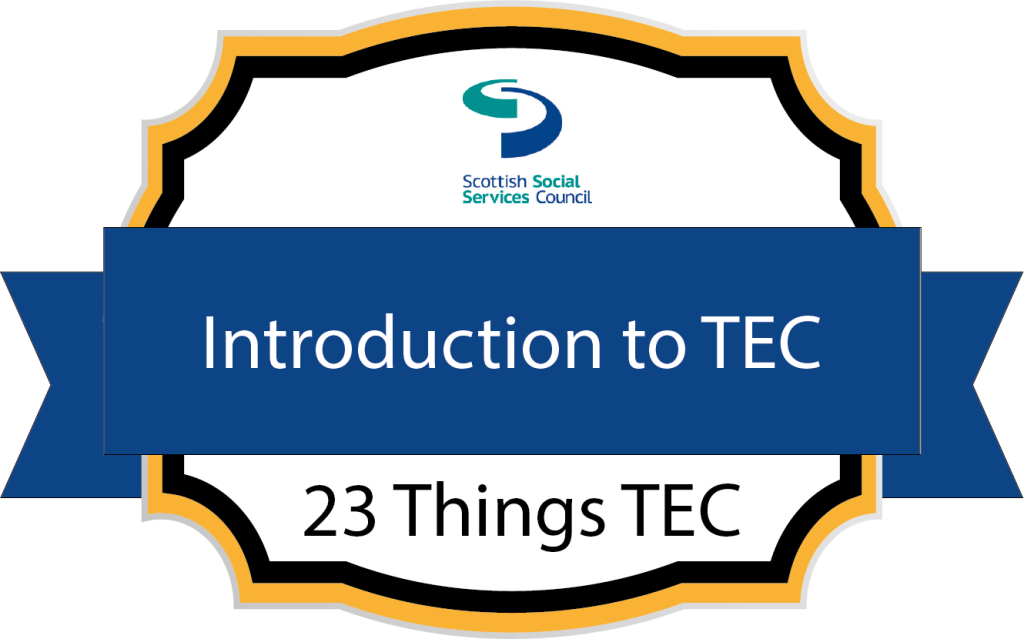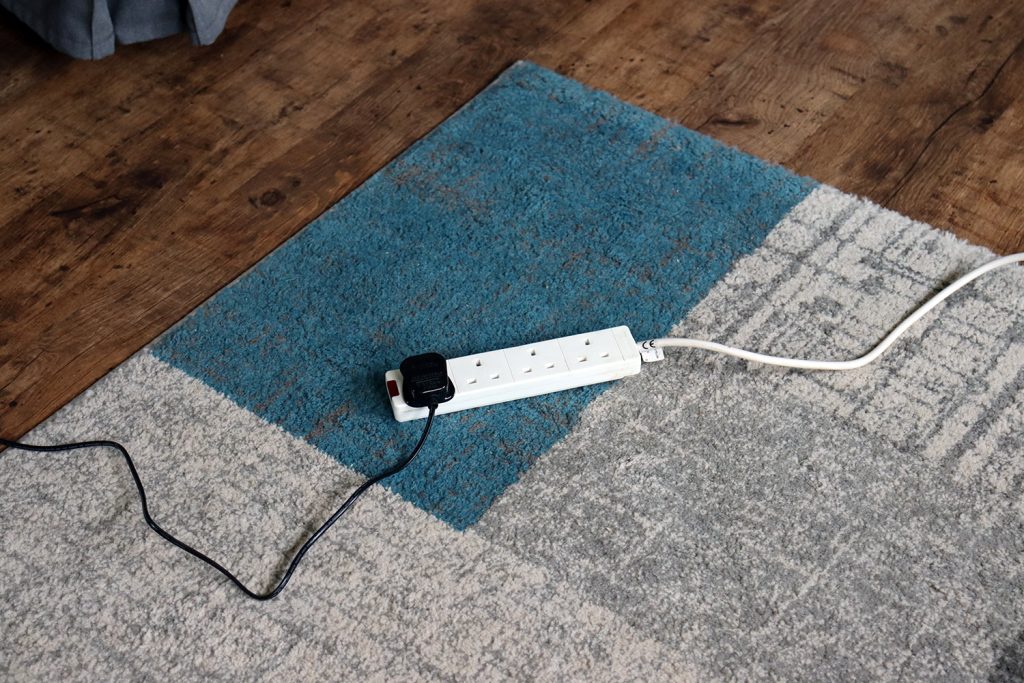Introduction
There are very few, if any, activities we do that are completely risk free, so we need to assess any risks before we undertake activities. Some of these assessments may be done almost unconsciously like stopping at the side of a road to look both ways before crossing, while other risk assessments will need to go into detail and be recorded.
In this Thing, you will be able to learn how we define risk, how you can identify the possible severity of the risk and what you can do to minimise the potential impact of risks for yourself, people you may work with, and the people who you support.
MyLearning badge information
MyLearning Badge: SSSC 23 Things TEC – Thing 5: Risk assessment.

Counts toward the Introduction to TEC milestone badge.

What is the difference between a hazard and a risk?
A hazard is something that can do you harm such as an injury, illness or financial loss while risk can be defined as the likelihood of that harm occurring. This likelihood may be increased by other things. For example, a loose carpet at the top of a flight of stairs is a hazard because someone may trip, fall and injure themselves. The risk of this happening would likely be increased if the lighting at the top of the stair was dim so people could not see that the carpet was loose.

Another example that relates to technology enabled care is the hazard of power cords that trail across floors. This can cause a risk of tripping and falling, particularly for people who have difficulties with mobility. Trailing cables can also create risks of the cables getting damaged and worn which could prevent the devices from working or even a risk of fire or electrocution.
How do you make risk assessments?
To make a risk assessment you need to consider the likelihood of the event happening against the amount of potential harm caused by that risk. Some hazards may occur more frequently but have little impact wellbeing, while other hazards may seldom occur but have a significant impact.

The weather warning impact matrix used by the Met Office is a very good example of making risk assessments. If you look at the image of this on the right, you will see that the likelihood of an event happening is measured upwards on the left while the impact is measured along the bottom from left to right. Weather forecasters assess the potential impact of a weather event against the likelihood of it happening to decide if they need to issue a weather warning and at what level this should be. So if an event is assessed to have a low impact and is not very likely to happen, they will not issue a warning, however if they think it is very likely and may have a very high impact, for example a risk to life, they will issue a red warning. You can read more about the different levels of warnings by clicking on this link https://www.bbc.co.uk/weather/warnings/weather
The principles are the same for any risk assessments that you carry out before doing activities. You need to assess the impact if something goes wrong with the likelihood of that happening. This will help you to plan how to remove, or at least reduce, the impact of anything going wrong. Often, we do this without calling it a ‘risk assessment’. For example, if you were about to lift a pot that has been boiling for a while on a cooker and has a metal handle, you may decide to put a cloth around the handle to stop your hand being burned. You made an assessment of the risk that you could be harmed and taken a step to reduce that risk.
When some people think about using technology, they may not feel as confident about doing risk assessments. However, the process is the same as other risk assessments:
- What could happen?
- How likely is it to happen?
- What can I do the remove or minimise the impact if it happens?
Learning activity 1
Bill is someone that you support to live in his own home. Bill is not able to get out of bed so relies on technology to make his life easier. He has lots of visitors most days including his young grandchildren who are under 5 years old. His house is old and he does not have many electrical sockets in each room. He is using an iPad to do some online shopping but also wants to charge this so he can make a call to his son in Canada later. Unfortunately, all the sockets near to his bed are already being used by devices that cannot be turned off so the only socket available is on the other side of his room. The power cord just reaches the socket, but it will be tight and stretch across the room at about knee hight. Bill asks you to connect his iPad, which he is holding, to the socket on the other side of the room.
From the information above, please make a note of the following:
- What could potentially happen and who might be affected?
- What is the likelihood of something happening?
- What could you do to avoid anyone, or any equipment, being harmed?
Please note it is important not to overlook what you think may be obvious as all risks must be assessed. What may appear obvious to you may not be to a colleague or the person you are supporting.
Make sure you keep your note as you will need to include it in your application for the MyLearning badge for this ‘thing’.
Can we, or should we, eliminate all risks from an activity?
It is important to understand that it may not be possible to remove all risks from an activity as unforeseen things happen in real life. Even the best risk assessments cannot cover things that have not been anticipated, however if these are things that it would be reasonable to expect to happen, even if they are rare, we must include them. For example, most of us stay in areas where power cuts are very uncommon so it might be easy to overlook this as a risk. However, if a loss of power might affect the wellbeing of someone you support, then you or the person undertaking the risk assessment must consider how to manage this in a way that minimises any impact or harm to the person you are supporting.
Remember that if you are a worker and notice something that you think may harm someone and has not been identified as a risk, you have a legal responsibility to report this to your line manager or supervisor and anyone else required under your organisation’s policies and procedures.

While it might be tempting to try to remove all risks from an environment or activity, you must balance this against the rights of the people you support and what is best for them. If we removed all risks, then we may also prevent someone from undertaking activities that would benefit them. For example, imagine if your role is to help someone with impaired understanding to learn how cook, it might be tempting to remove all sharp knives or only you will use them in case the person injures themselves. However, this may severely limit what they can cook and not enable them to develop their abilities for increased independence. In this situation, you should put things in place to manage the risk such as the individual wearing cut-proof kitchen gloves or you using a hand-on-hand demonstration to show them how to use a sharp knife.
Learning activity 2
Imagine that someone you support wants to undertake a new activity and you are asked to do a risk assessment. Make a note of the potential risks and what steps you identify you manage these. Please choose a small activity that is not too complicated so you do not have too many things to record.
Your note should include for each risk:
- What is the risk?
- Why is it a risk?
- What steps can you take to minimise the impact or likelihood of this happening?
If you are a worker, you can use your organisation’s risk assessment form for this.
Please keep your note as you will need to submit it for your MyLearning badge if you choose to apply for this.
